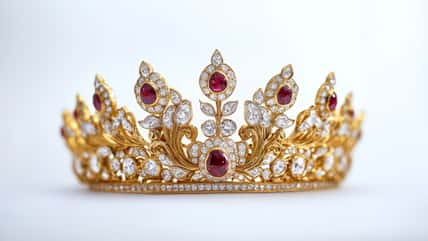As The Queen Of Sweden, She Ended The Thirty Years’ War, Expanded Education, And Established The First Swedish Newspaper, All While Defying Gender Norms During Her Reign In The 17th Century

So many queens have sat on thrones and complied with all the societal expectations of their role. Only a few queens have been brave enough to go against the norm and stand out during their reign.
One of them was Queen Christina of Sweden, who defied gender and religious norms during her reign in the 17th century.
Christina was born in 1626 and was the daughter of King Gustavus Adolphus Vasa of Sweden. Her mother was a German princess, Maria Eleonora of Brandenburg. She was the only heir to the throne, as she was her parents’ only surviving child.
This could explain why Christina’s father gave her the same education a boy would’ve received while she was growing up. At a young age, she had a strong interest in the arts. Christina hardly had any time to be a child, as when she was only six years old, her father died in battle in 1632, and she suddenly became Queen Christina.
However, she didn’t take the throne immediately and had to wait until she was a proper age. So, until she could assume the throne, Lord High Chancellor Axel Oxenstierna, one of her father’s advisors, ruled Sweden in her place.
Although Christina did not rule right away, she was consulted on political matters at a young age. She had ambitions to improve Swedish infrastructure and make education more accessible to the lower classes.
When she took the throne, one of her biggest accomplishments was ending the Thirty Years’ War in 1648 and declaring that a state’s official religion should coincide with the religion of its ruler.
She quickly got to work on expanding education throughout Sweden and impressively established the first Swedish newspaper. Christina also became a patron of the arts and supported local artists, writers, musicians, and live theater, taking the stage herself as an amateur actress on several occasions.
While her political accomplishments were impressive, Christina’s nobles and subjects became fascinated and even concerned with her unconventionality. Christina was known for dressing in very masculine clothes, which was quite uncommon for a queen. She wore men’s shoes, spoke in a low-toned voice, and styled her hair like a young man.

Manuel – stock.adobe.com – illustrative purposes only
Some of Christina’s nobles were very frustrated with her love life, as evidence has suggested she had romantic relationships with women, most significantly with her lady-in-waiting, Countess Ebbe “Belle” Sparre, with whom she exchanged romantic letters.
In 1649, Queen Christina announced she had no plans to marry and that she chose her first cousin, Charles Gustav, to be heir to the throne.
In the late 1640s, Christina began feeling less desire to remain queen, as international tension and taxation issues made the role more stressful. In 1651, she began speaking out that she wanted to abdicate or step down from the throne. As her council attempted to get her to stay, her mental health became worse, and she finally had to abdicate in 1654.
After leaving the Swedish throne, Christina disguised herself as a man and traveled to Rome, where she converted from Protestantism to Roman Catholicism, making her a favored figure at the Vatican.
She lived in Rome for several years, befriending popes and continuing to advocate for the arts. In the following years, she traveled around Europe, writing philosophical works and supporting artists around the world.
In the late 1650s into the 1660s, Christina attempted to get back into politics, trying to scheme her way into becoming the Queen of Naples and later the Queen of Poland. However, once she failed to do so, she returned to Rome to live out her final years as a respected philosopher and patron of the arts.
Christina died at 62 in 1689 and was buried in St. Peter’s Basilica, which was quite a rare honor for a woman. Her strength and remarkable uniqueness truly made her a one-of-a-kind queen and woman of her time.
Sign up for Chip Chick’s newsletter and get stories like this delivered to your inbox.
More About:Chicks We Love





